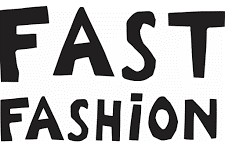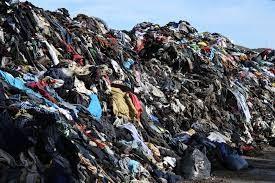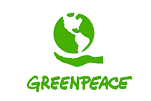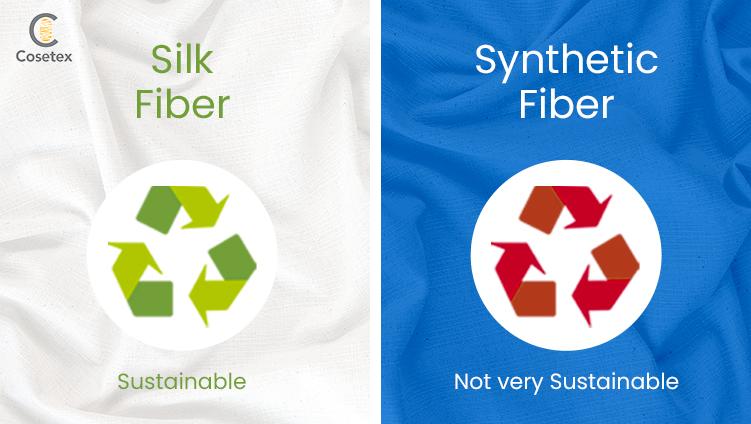Not all that is recycled is gold
Not all that is recycled is gold
“Fashionable” reasoned critique of recycling in the fashion industry
Silk is, in the category of textile fibres, a natural fibre, highly sustainable, certifiably organic and recyclable. Recycled silk maintains the excellent characteristics of silk intact.
The history of Cosetex talks about over 120 years of experience in textiles, silk and more precisely in silk waste considered in itself already “recycled” by-products of the processing.
Is it possible, broadening the horizon, to consider textile recycling as a real value? What place does it have, and how important is it, in the calculation of overall sustainability? Is the recycling of natural textile fibres the same as recycling synthetic materials?
Critique of Fast Fashion: some starting points

2 weeks – average time between the production of a garment and its appearance on the store shelf
19.99 euro – average price of the fast fashion product
7 – number of times a garment is used on average
100 billion – number of garments produced in one year
70 million – tons of clothes thrown away
84% – discarded garments destined to be burned or thrown in landfills
48% – perfectly usable discarded clothes
80% – unused or unworn clothes (Italian data)
28% – clothes we are convinced not to use (Italian data)

Uganda, Kenya, Hungary, Pakistan – countries that receive the most reusable textile products, collected by specialised traders
Accra – the capital of Ghana receives 30,000 tons of used clothing a year. 40% immediately ends up in landfills:
“It is a long and complex supply chain that is completely invisible not only to the average person, but also to those who participate in it… Anything that can be sold in thrift stores is sold in the ‘second hand clothing’ market”
– Liz Ricketts, co-founder and director of The Or Foundation
The solution for reducing pollution coming from the textile sector
The only real solution (opportunity) in the textile field (but not only), to be able to mitigate, in the first instance and solve in the long term, the problem of high levels of pollution and poor sustainability of textile/clothing products is the reduction in the consumption of products.

“The circular economy is on everyone’s lips, but behind this beautiful label lies the industry’s impossible dream that circularity can solve the problem of excessive consumption of resources. In any case, we must consume less, because 100 percent recycling is a chimera“.
– Chiara Campione, Senior Corporate Strategist of Greenpeace Italy

“If we convince companies to do less, it ultimately means that the onus becomes on them to buy higher quality products and companies commit to quality and durability at the core of their mission”.
– Jenna Johnson head of Patagonia – Copenhagen Fashion Summit 2021 “Prosperity vs. growth”
Recycling as an opportunity: factors to consider
Truly sustainable recycling must start from:
- The polluting impact of the initial fibre
- The social and environmental impact of recycling;
- The quality of the fibre obtained from recycling;
- The possible worsening of the polluting impact of the fibre caused by the recycling operations;
- Disposal
The recycling of products and fibres already produced can be an excellent policy only if placed at the service of a real rethinking of how much and how to use a product of the textile industry.
October 2021: what is the situation regarding the sustainability of synthetic fibres
All of the plastic produced in human history is still in circulation and represents the legacy of older generations to new generations
Recycling policies that are truly aimed at sustainability cannot fail to take into account that in the now long history, (that started in the second half of the 1800s), of the different synthetic fibres that are generally included in the history of plastic (view the pdf on the history of plastic), none of these fibres, nowadays, appears to have completely degraded and will never do so except by emitting highly polluting substances that are harmful to nature and humans.
Recycling in the textile sector will only have real value if it leads to:
- The replacement of synthetic (artificial) fibres with natural fibres, favouring the use of those with lower environmental impact;
- Carbon footprint – precise control of the specific impact;
- The reduction of consumption and collection of clothing;
- Quality, in raw materials, processes and packaging;
- Longer lasting garments;
- Efficient secondary markets for reusing the product;
- Recycling, transformation and reconversion.
Sustainability By sustainability and/or sustainable development, we mean those conditions for which a development system is in full balance and able to guarantee the satisfaction of the needs of current generations, without compromising its full feasibility by future generations.

